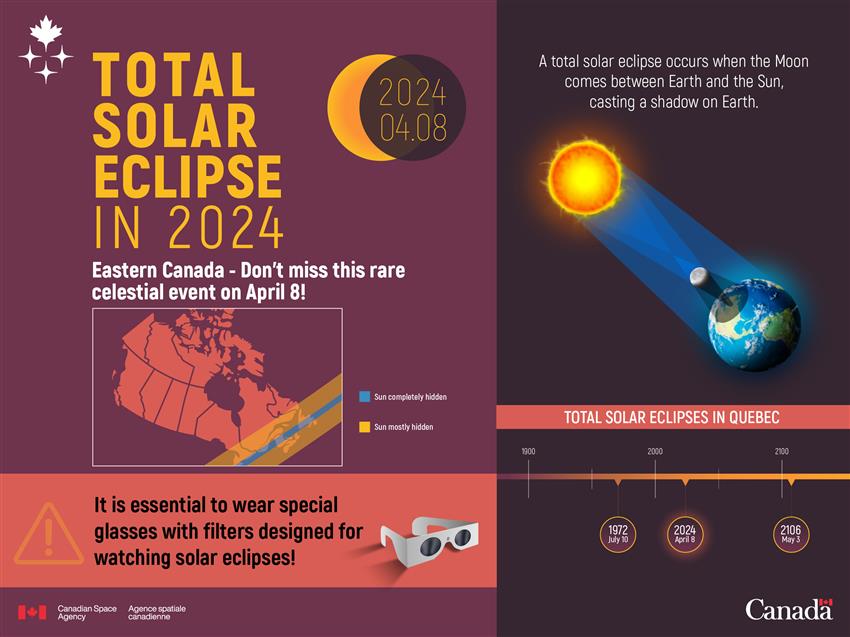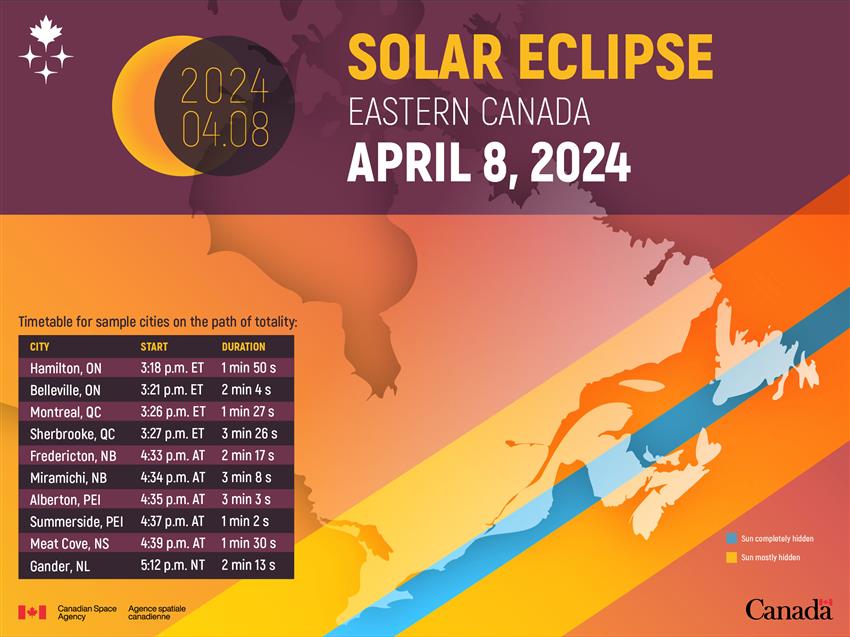Total solar eclipse of
Very important!
Looking directly at the Sun, without appropriate protection, can lead to serious problems such as partial or complete loss of eyesight.
On , a spectacular and rare celestial event unfolded over Canada, the United States and Mexico – a total solar eclipse. As the Moon aligned perfectly between Earth and the Sun, temporary darkness swept across parts of the country, captivating countless spectators.
Timelapse footage of the total solar eclipse from CSA headquarters. (Credit: CSA)
In this video, learn about safe practices for observing a solar eclipse. (Credits: CSA, NASA)
In this video, CSA astronaut David Saint-Jacques explains this remarkable celestial event and reminds you to use eye protection as you witness the solar eclipse! (Credits: CSA, NASA)
Before , Quebec hadn't witnessed a total solar eclipse in over 50 years (), and it will be over 80 years before the next one (). However, partial solar eclipses, as well as total and partial lunar eclipses, take place regularly in Canada.

Text version - Total solar eclipse - infographic
This infographic presents useful information about the total solar eclipse of , which will be visible in parts of Canada. (Credit: CSA)
Eclipse path of totality
In Canada, the solar eclipse's path of totality passed through some cities and towns in Ontario, Quebec, New Brunswick, Nova Scotia, Prince Edward Island and Newfoundland, plunging them into darkness for a few minutes. People outside the path of totality were able to observe a partial solar eclipse, during which the Sun was not hidden in totality.

Text version - Eclipse path of totality - infographic
Map of the path of totality for the solar eclipse of , in Canada. (Credit: CSA)
